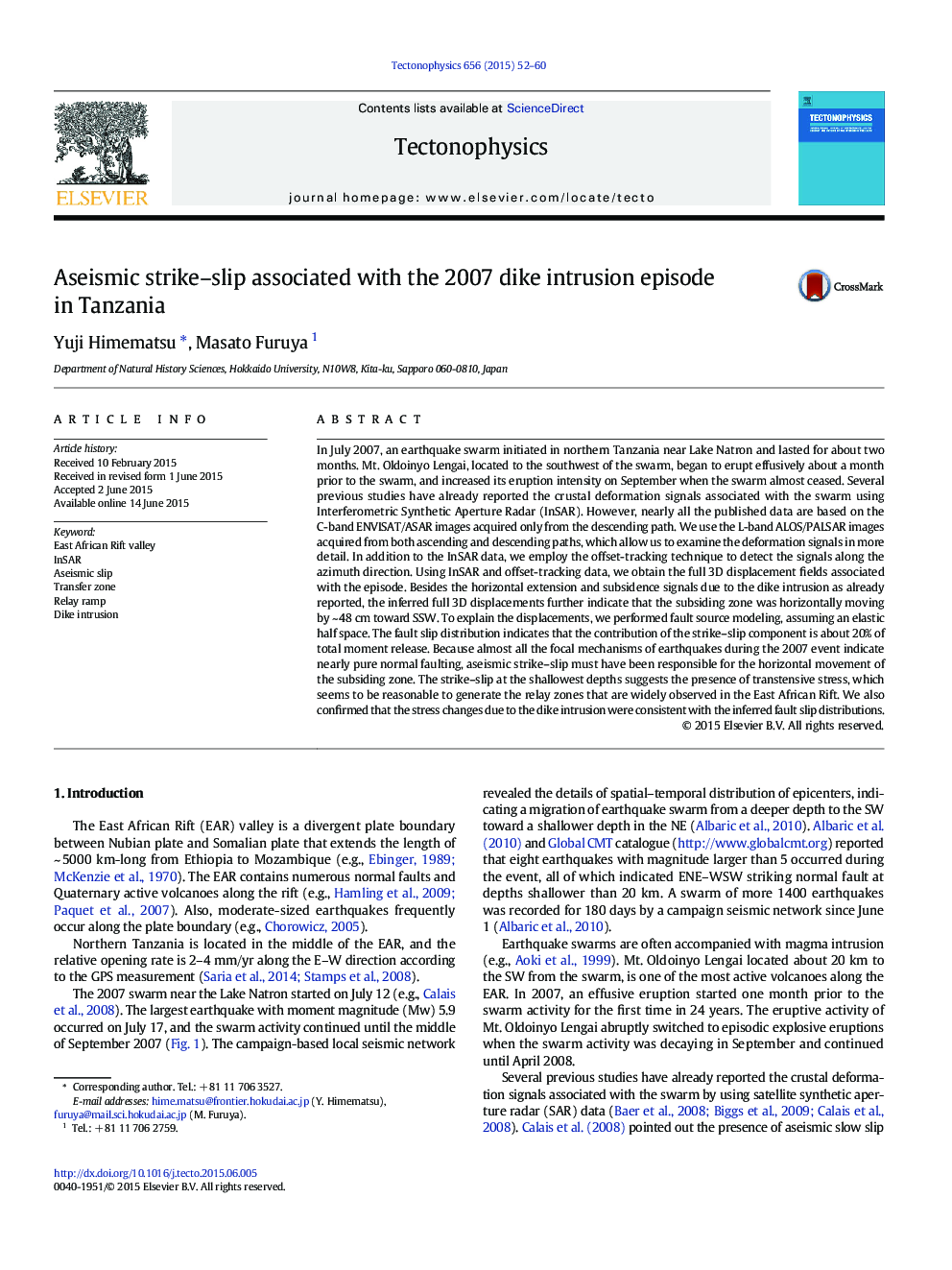| Article ID | Journal | Published Year | Pages | File Type |
|---|---|---|---|---|
| 4691601 | Tectonophysics | 2015 | 9 Pages |
•We derived the 3D displacement associated with the 2007 rifting event in Tanzania.•We estimated a fault model that consists of three faults and one dike opening.•The 3D displacements show rift-parallel movements of the subsided zone in the graben.•The model indicates significant strike–slip that was absent in the focal mechanisms.•The aseismic strike–slip suggests transtensive stress at the shallow crust.
In July 2007, an earthquake swarm initiated in northern Tanzania near Lake Natron and lasted for about two months. Mt. Oldoinyo Lengai, located to the southwest of the swarm, began to erupt effusively about a month prior to the swarm, and increased its eruption intensity on September when the swarm almost ceased. Several previous studies have already reported the crustal deformation signals associated with the swarm using Interferometric Synthetic Aperture Radar (InSAR). However, nearly all the published data are based on the C-band ENVISAT/ASAR images acquired only from the descending path. We use the L-band ALOS/PALSAR images acquired from both ascending and descending paths, which allow us to examine the deformation signals in more detail. In addition to the InSAR data, we employ the offset-tracking technique to detect the signals along the azimuth direction. Using InSAR and offset-tracking data, we obtain the full 3D displacement fields associated with the episode. Besides the horizontal extension and subsidence signals due to the dike intrusion as already reported, the inferred full 3D displacements further indicate that the subsiding zone was horizontally moving by ~ 48 cm toward SSW. To explain the displacements, we performed fault source modeling, assuming an elastic half space. The fault slip distribution indicates that the contribution of the strike–slip component is about 20% of total moment release. Because almost all the focal mechanisms of earthquakes during the 2007 event indicate nearly pure normal faulting, aseismic strike–slip must have been responsible for the horizontal movement of the subsiding zone. The strike–slip at the shallowest depths suggests the presence of transtensive stress, which seems to be reasonable to generate the relay zones that are widely observed in the East African Rift. We also confirmed that the stress changes due to the dike intrusion were consistent with the inferred fault slip distributions.
